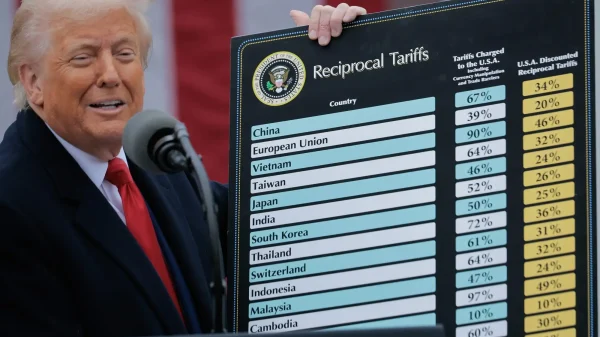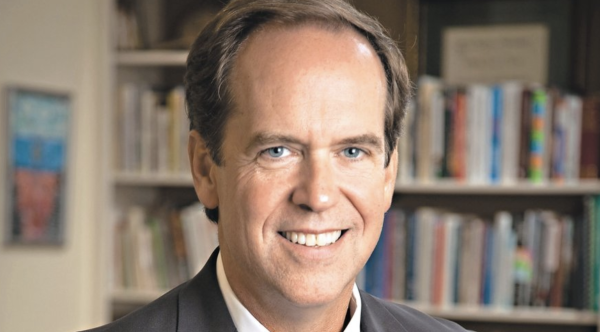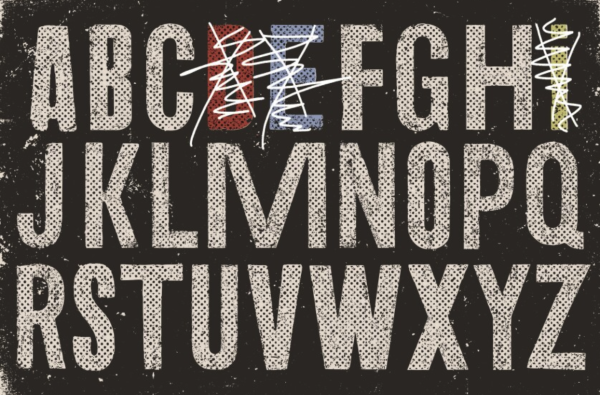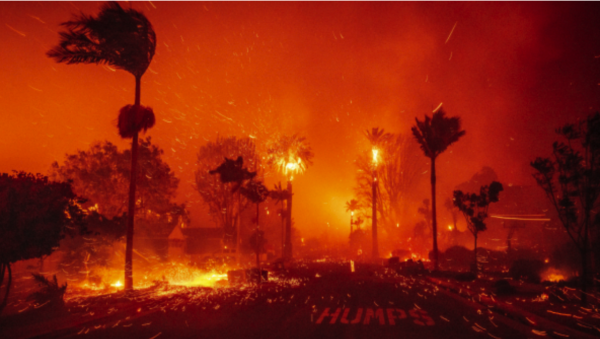Ferguson riots inspire debate
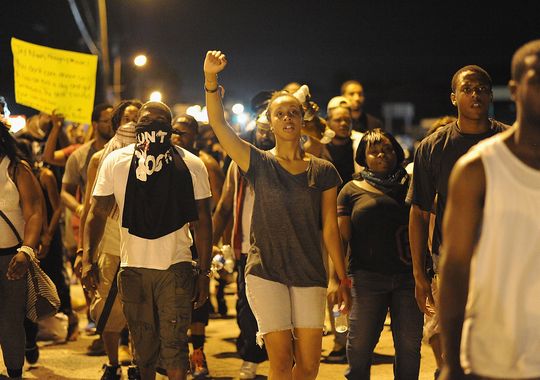
Imagine a city where the 67 percent of the population is African-American and 29 percent of the population is white. However, in the last year 86 percent of stops, 92 percent of searches, and 93 percent of arrests made in this city were of African-American people, even though police officers were less likely to find contraband on African-Americans than whites (22 percent vs. 34 percent).
This city is Ferguson, Missouri, where on Aug. 9, eighteen-year old Michael Brown was shot to death.
Brown was born in May of 1996. Eight days before his death, he had graduated from Normandy High School in St. Louis and planned to attend Vatterott College on Aug. 11. Even though as a teenager he had been a bit rebellious, he did not have a criminal record as an adult. His teachers referred to him as “gentle giant” due to the fact that he was six foot and four inches tall and weighed 292 pounds.
At around noon on August 9, Brown and his friend, Dorian Johnson, were walking in the 2900 block of Canfield Drive. Ferguson police officer Darren Wilson, ordered them to move onto the sidewalk. However, an altercation started to take place between Brown and Wilson. This led to Wilson firing at least six shots, at least one of which fatally wounded Brown. Brown died about 35 feet away from the police car.
However, the details of the event are nebulous. There have been conflicting accounts of the event from Johnson and the police as well as other witnesses.
Johnson claims that when they encountered Wilson, Wilson tried to get out of his car. The door of the car hit him and Brown and bounced back due to the size of Brown. As a result, Wilson became upset and grabbed Brown the neck. But as Brown tried to get away, Wilson threatened to shoot and then fired a shot. Brown started to run away as Wilson fired five more shots.
The police, according to Wilson’s account, claim that Brown was the instigator. They say that when Wilson got out of the car, Brown pushed him back in, physically assaulted him, and tried to get Wilson’s weapon. As a result, a shot was fired and Brown ran away, but turned around towards Wilson. Wilson feared for his life and fired more shots.
“Wilson should have had the right to fire because Brown was running toward him aggressively and did not cease or desist when Wilson told him to,” said senior Evan Katz, who is a young Republican. “He had reason to feel threatened.”
After the shooting, three autopsies were conducted: an independent autopsy, a federal autopsy, and a county autopsy. Both the federal and county autopsies declined to reveal additional details except that Brown was shot six times and that he was shot in the front, respectively.
However, the autopsy that was conducted at request of Brown’s family released more details than the others. According to the report, four of the bullets entered his right arm, one entered his right eye, and one entered the top of his skull. This evidence suggested that Brown was facing the officer with his hands above his head.
“I don’t think there was any justification for Darren Wilson to shoot Michael Brown,”said junior Alex Kong, a young Democrat and a debater. “The evidence clearly shows that Brown was completely cooperative and complacent from the beginning, and thus that there was no possible justification for Wilson to ‘stand his ground’.”
The day after the shooting, peaceful protests broke out in Ferguson. However, during a candlelight vigil, some people became unruly, and as a result, 150 police officers assembled into riot gear. These protests eventually began to lead to the looting of businesses, the vandalizing of vehicles, and confronting of police officers.
Some, like senior Connor Hutchins, think that the rioters were not justified in their actions.
“I think the rioters in Ferguson have been acting in a most uncivilized and immature manner. It is one thing to publicly demonstrate and express strong feelings and emotions about the shooting, but it is quite another to create unnecessary mayhem and loot the stores of innocent shopkeepers and local residents,” said Hutchins. “The legitimacy of the protest movement was entirely lost when people resorted to violence and thievery. These actions have also hurt the Ferguson community in ways yet to be seen.”
As a result of the increasing violent actions of the rioters, the usage of police force escalated. At a QuikTrip, which had been burned and looted the day before, police used tear gas and rubber bullets to disperse a crowd. There were also reports of gunshots being fired. When several hundred protesters gathered in Clayton, Missouri to seek prosecution of Wilson, the police used tear gas, after, reportedly, the crowd threw rocks at them. The next day, the police used smoke bombs, flash grenades, rubber bullets, and tear gas to disperse the crowd.
However, others, like junior debater, Colesy Cotter, believe that the amount of police force justified the actions of the rioters.
“I think that peaceful protesting would have been the most effective method for the protesters,” said Cotter. “But, given the police responded with tanks, tear gas, and mace, I think that the rioters are justified in the actions.”
As a result of the widespread criticism of the actions of the St. Louis County Police, Missouri governor Jay Nixon stated that the Missouri State Highway Patrol, led by Captain Ron Johnson, would take over policing Ferguson. On Aug. 14, Johnson led a peaceful march in Ferguson demonstrating a shift from the previous methods used.
Nevertheless, once the police released the name of the officer who had shot Brown, the violence increased again as more protests and looting broke out. Nixon declared a state of emergency and implemented nightly curfews in Ferguson. More protests occurred, and Nixon called in the National Guard to help restore peace.
Kong believes that the amount of force used through tear gas, tanks, and automatic rifles, was excessive and that the government needed to find a better way to address the rioters.
“I think that the police force used an unnecessary amount of force. Pictures of Ferguson are literally indistinguishable from those of armed conflict in a war zone,” said Kong. “Perhaps the reason they became violent in the first place was the blatant lack of receptiveness by the government to the very reason they were protesting in the first place, as demonstrated by the fact that the government thought it prudent to bring in equipment used in war zones in order to preemptively quell a peaceful protest.”
On Aug. 20, the unrest began to show signs of improvement and protests became more peaceful. Nixon withdrew the National Guard as a result. On Aug. 25, a funeral for Brown was held and thousands of people came to show their support. Protests were also suspended for a day at the request of Brown’s family.
Senior Eric Odermatt believes that while the motivations of the rioters were justified, the actions were not.
“First, the destructive manner in which the riots were carried out allows the media to characterize the movement as barbaric and unreasonable. This characterization limits the movement’s reformative potential – the populace wants to insulate itself from the conflict because they feel threatened,” said Odermatt. “Second, it’s not necessary to blow up or raid shops – it doesn’t achieve the rioters’ true goals and only got the National Guard involved. Peaceful protests would have made a much bigger difference.”
Joe Tribble, history teacher, agrees that the rioters were not vindicated in their actions.
“I don’t think the rioters in Ferguson are justified; I don’t think any rioters are justified. They are taking advantage of the situation and it is tragic,” said Tribble. “Businesses that had nothing to do with the shooting were targeted and it will be very hard for them to recover. What would Dr. Martin Luther King Jr. say in response to this situation? He would be appalled.”
The few weeks of turbulence in Ferguson and the shooting of Brown have been covered all over the media.
“I have heard quite a bit about the Ferguson shooting,” said Hutchins. “It was all over the news. Every time I’d come in the kitchen and my mom had the TV on, I heard about it, and every time I looked on Yahoo news there were articles posted about it.”
The media has also drawn attention to the fact that online fundraisers for Wilson have surpassed those for Brown, which Kong thinks is an example of 21st century racism.
“I think it’s symptomatic of the fundamental disconnect in racial politics in modern America, which is the central issue at the heart of this whole incident. It’s undeniable that racism is still prevalent in America today. The form of racism that still persists is in a way even more pernicious than outright contempt for people of a certain race, because it is invisible and therefore so much easier to deny,” said Kong. “Contemporary, 21st century racism manifests itself in how structurally disadvantaged black people are than white people; this is an important distinction. There are no more racists in America, but racism still persists.”
In addition, the media has come under scrutiny for portraying Brown in inaccurate way, according to Brown’s family. Tribble agrees that the information coming from the media is distorted and that no one knows the full story.
“I don’t think anyone is well informed about the event,” said Tribble. “Most people get their current events from flawed media. The media is a business and they want to sell. To be better informed, you need to consider a wider variety of sources. Don’t take the first thing you hear. Fast news is dangerous and it leads to judgment on everyone’s part.”
Kong believes that the media coverage of the events in Ferguson highlights the modern politics of race.
“It seems that a lot of the backlash from the typical Southern conservative white person stems from the fact that this shooting was covered so much in the media, and the fact that riots occurred. Many of them see the relative lack of outrage when a black person kills a white person as hypocrisy and symptomatic of the liberal left’s ‘obsession with race’,” said Kong. “This only serves to further alienate them from the fundamental truth that the reason why marginalized people react so strongly to shootings like those of Mike Brown and Trayvon Martin is not only for the loss of life of a human being, but also because their deaths are symbols of the same heedless and invisible violence that black communities across America are still suffering daily.”

